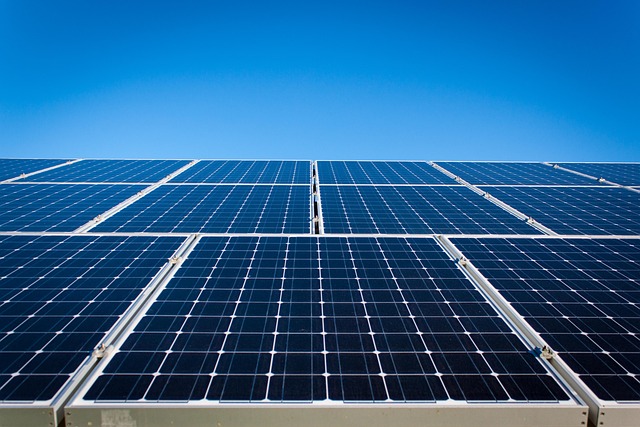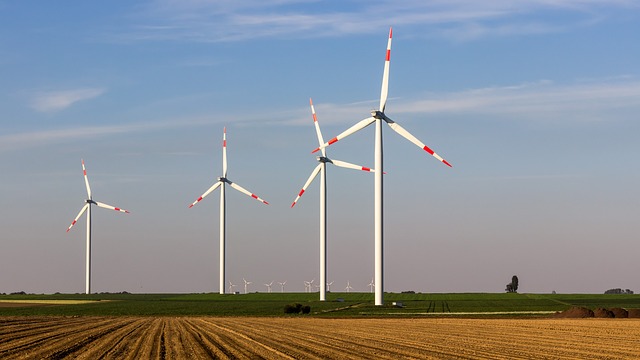Renewable Power and the Quest for Sustainability
The world is at a critical juncture in its relationship with energy. As global temperatures rise and environmental concerns become more pressing, the quest for sustainable energy solutions has gained unprecedented momentum. Renewable power has emerged as a beacon of hope, offering a pathway to reduce our reliance on fossil fuels, mitigate the effects of climate change, and foster a more sustainable future.
The Importance of Renewable Energy
Renewable energy refers to energy derived from natural processes that are replenished constantly. Examples include solar, wind, hydroelectric, geothermal, and biomass. These energy sources are essential for achieving sustainability for several reasons:
- Reduction of Greenhouse Gas Emissions: Unlike fossil fuels, renewable energy sources produce little to no greenhouse gases when generating power, thereby significantly reducing the overall carbon footprint.
- Energy Security: Diversifying energy sources through renewables enhances energy security. It lessens dependency on imported fuels, which can be subject to geopolitical tensions and price volatility.
- Job Creation: The renewable energy sector is fast-growing, contributing to job creation in manufacturing, installation, maintenance, and innovation.
- Technological Advancement: The renewable energy field fosters research and development, leading to improved technologies that enhance efficiency and reduce costs.
- Accessibility: Renewable energy systems can be deployed in remote areas, providing electricity to communities that are not connected to conventional power grids.
Types of Renewable Energy Sources
The portfolio of renewable energy sources is diverse, each with its unique geographic and environmental advantages.
Solar Energy
Solar energy harnesses sunlight through photovoltaic cells or solar thermal systems. It is one of the most abundant energy sources on Earth. Innovations in solar technology, including bifacial panels and solar farms, have made solar energy more efficient and cost-effective.
Wind Energy
Wind energy captures kinetic energy from wind using turbines. Onshore and offshore wind farms can generate significant electricity, and the technology is continually evolving, with larger and more efficient turbines being developed.
Hydroelectric Energy
Hydroelectric power generates energy from flowing water. Dams are commonly used to create reservoirs, and the movement of water spins turbines that generate electricity. While highly effective, hydroelectric projects often require careful consideration of ecological impacts on local environments.
Geothermal Energy
Geothermal energy harnesses heat from the Earth’s core. It is a reliable and constant energy source, primarily used for electricity generation and direct heating applications. Its potential is especially significant in volcanic regions, where geothermal resources are more accessible.
Biomass Energy
Biomass energy is derived from organic materials, such as plant and animal waste. When burned or converted into biofuels, biomass can substitute for fossil fuels. While considered renewable, the cultivation of biomass feedstock must be managed judiciously to avoid negative environmental impacts.
Challenges Facing Renewable Power
Despite the clear benefits of renewable energy, several challenges impede its widespread adoption. Addressing these challenges will be crucial for achieving a sustainable energy future.
Intermittency and Reliability
Many renewable energy sources, particularly solar and wind, are intermittent. Energy production can fluctuate based on weather conditions and time of day, complicating the challenge of maintaining a consistent energy supply. This intermittency necessitates advancements in energy storage technology, such as batteries and pumped-storage hydroelectric systems, to ensure reliability.
Infrastructure and Investment
Transitioning to renewable energy requires significant investment in infrastructure—including generation systems, transmission lines, and smart grid technology. Many regions face financing challenges, and some governments may lack the political will to prioritize renewables over traditional fossil fuels.
Regulatory and Policy Frameworks
The regulatory landscape can either facilitate or hinder the growth of renewable energy. Effective policies must provide incentives for renewable development, streamline permitting processes, and support research and innovation. However, policy uncertainty can create a challenging environment for investment.
Environmental and Land Use Concerns
While renewable energy is generally more environmentally friendly than fossil fuels, it is not without its challenges. Large installations can disrupt local ecosystems, displace communities, and alter land use. Careful planning, environmental assessments, and community engagement are essential to mitigate these impacts.
The Role of Technology in the Renewable Energy Transition
Technological innovation is at the heart of advancing renewable energy solutions. The emergence of smart technologies, artificial intelligence, and the Internet of Things (IoT) is revolutionizing how energy is generated, consumed, and managed. Innovations such as energy management systems, demand response strategies, and decentralized energy production are enhancing efficiency.
Additionally, breakthroughs in energy storage technologies are vital for overcoming the intermittency challenge. Battery technologies, such as lithium-ion and next-generation solid-state batteries, are crucial for storing excess energy generated during peak production times for later use.
The Economic Case for Renewable Energy
The economic viability of renewable energy has improved significantly in recent years. The costs associated with solar and wind energy have plummeted, often making them cheaper than coal and natural gas in many regions. This trend has been driven by competition, economies of scale, improved technology, and supportive policies.
Investments in renewable energy also catalyze economic growth. As countries strive to meet their renewable energy targets, they create jobs, stimulate local economies, and foster innovation in related sectors. This transition not only addresses climate change but also reshapes the energy market, creating opportunities for entrepreneurs and businesses.
Social and Cultural Perspectives
The transition to renewable energy involves not just technological and economic transformations, but also social and cultural shifts. Public awareness and acceptance of renewable energy sources are crucial for their successful implementation. Engaging communities, educating the public about the benefits of renewables, and addressing concerns about local impacts can facilitate a smoother transition.
Furthermore, disadvantaged and marginalized communities must be included in the renewable energy discourse. Ensuring equitable access to clean energy resources can enhance social justice and contribute to broader environmental goals. Efforts must be made to provide affordable renewable energy options, particularly in low-income areas often disproportionately affected by pollution and climate change.
Global Initiatives and Agreements
The global push for renewable energy has been further accelerated by international agreements and initiatives. The Paris Agreement, established during the United Nations Framework Convention on Climate Change (UNFCCC), aims to limit global warming to well below 2 degrees Celsius. Countries have committed to reducing greenhouse gas emissions and increasing their dependence on renewable energy.
Various nations are establishing ambitious renewable energy targets. For instance, countries such as Denmark and Germany are leading the way in wind energy, while others like China have emerged as leaders in solar power production. Collaborations and knowledge-sharing among nations are essential for advancing global renewable energy initiatives, enabling lessons learned in one context to benefit others.
The Future of Renewable Energy
The future of renewable energy is bright, with significant potential to reshape our energy systems and combat the climate crisis. Continued investment in research, infrastructure, and community engagement will play vital roles in supporting this transition.
Looking ahead, it is crucial to pursue a multi-faceted approach that includes integrating renewable sources into the existing energy grid, developing smarter technologies for efficient energy use, and driving policies that incentivize sustainable practices across industries. The shift to renewable power will require collaboration among governments, businesses, and communities worldwide to pave the way for a sustainable energy landscape.
Conclusion
Renewable power represents not just an alternative to traditional fossil fuels, but a comprehensive solution to some of the most pressing challenges of our time. As we navigate the complex landscape of climate change, energy security, and social equity, investing in renewable energy remains critical. Embracing this energy revolution is not just about sustainable power; it is about ensuring a healthier planet for future generations and bolstering the resilience of our economies and communities.



